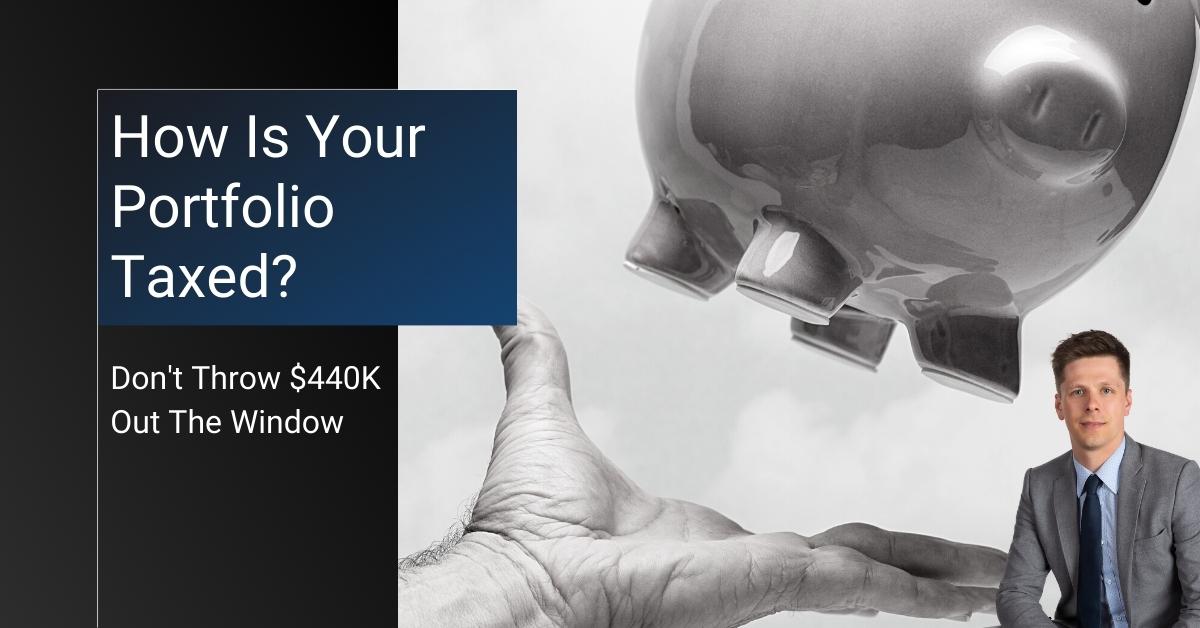[vc_row css=”.vc_custom_1612380408194{padding-top: 20px !important;padding-bottom: 20px !important;}”][vc_column][vc_column_text]
Don’t throw $440k out the window
Has a credit card statement ever made you yell out, Holy Moly!!!!! (or insert expletive)?
That’s what happened to me last week, and I quickly found myself on a call with my credit card provider. To my surprise, I was apparently treating someone out in Orlando to a slew of online purchases.
I ended up getting refunded for the fraudulent purchases, but it definitely made me examine my statements with a keener eye.
As a result of taking a closer look, I realized I was needlessly spending money on a few services I was no longer using or thought had been canceled.
Safe to say, I was disappointed in myself for not paying as much attention as I should have been.
There’s nothing I despise more than throwing money out the window.
When it comes to paying taxes, many people are needlessly losing their hard-earned money. In some cases, to the tune of over $440,000.
How is your investment portfolio taxed?
When it comes to saving for retirement, Canadians have numerous options, including RRSPs, Tax-Free Savings Accounts (TFSA), and Non-Registered Accounts.
They all have their benefits, but it’s important to know how each is treated from a tax perspective.
Registered Accounts, such as RRSPs and RRIFs, are fully taxable. Every dollar withdrawn from these accounts will be taxed.
On the other hand, there is no tax payable on withdrawals from the TFSA, and withdrawals from a non-registered account are usually only partially taxed.
Having the right investments in the proper accounts
Due to the reasons outlined above, you would rather have your tax-efficient retirement accounts (TFSA, Non-Registered) grow at a higher rate than your taxable registered accounts (RRSPs, RRIFs).
For a quick video outlining the benefits of this strategy, see the link below.
The Easiest Way to Reduce Your Tax Bill
https://transcanadawealthmanagement.com/the-easiest-way-to-reduce-your-tax-bill/
An Example
Here is a quick example. Let’s say you had $1,000,000, of which $500k was in RRSPs, $400k was in a Non-Registered Account, and $100k was in a TFSA. Let’s also assume you were targeting a return of 4% annually. Would you rather have portfolio A or B
Portfolio A:
$500k RRSPs (Taxable) – 4%
$400k Non-Registered (Tax-Efficient) – 4%
$100K TFSA (Tax-Free) – 4%
Total Portfolio Return – 4%
Portfolio B:
$500k RRSPs (Taxable) – 2%
$400k Non-Registered (Tax-Efficient) – 6%
$100K TFSA (Tax-Free) – 6%
Total Portfolio Return – 4%
Even though both of these portfolios grow at a rate of 4%, portfolio B is preferred, as it grows to a higher value after tax.
Click the image to enlarge
[/vc_column_text][/vc_column][/vc_row][vc_row][vc_column][dt_fancy_image image_id=”8006″ onclick=”custom_link” image_link=”https://transcanadawealthmanagement.com/wp-content/uploads/2021/12/Asset-Location-Spreadsheet-2.0.pdf” custom_link_target=”_blank” width=”1500″][vc_column_text css=”.vc_custom_1640805788984{padding-top: 20px !important;padding-bottom: 20px !important;}”]
How this plays out in reality
I recently sat down with a couple who was approaching retirement. They were looking for a second opinion on their retirement plan, and after speaking with them, it became apparent that they could significantly reduce their tax bill by going through the Pay Less Tax Blueprint.
By utilizing the blueprint, it was identified that reallocating their portfolios as outlined above would significantly improve their long-term outlook.
Had these changes not been implemented, they could expect to have $440k less once they turned 90.
That’s a lot of money that could have gone to their kids and grandkids.
Don’t wait until the last minute
The cost of doing nothing compounds quickly as the years go by and can become so substantial that you might yell out Holy Moly!!!![/vc_column_text][/vc_column][/vc_row]





